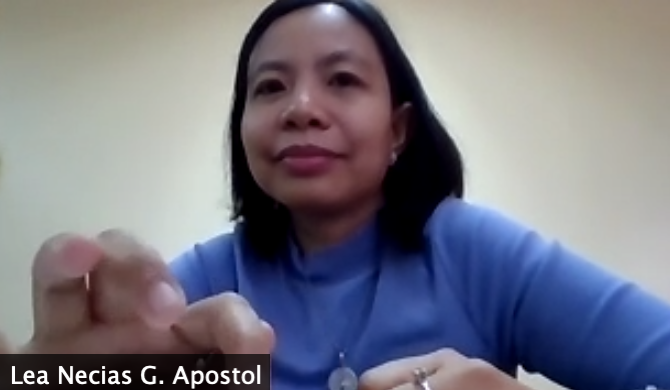
A virologist from the Research Institute for Tropical Medicine-Department of Health (RITM-DOH) said among the objectives that need to be accomplished for polio eradication is environmental surveillance. This was explained by Dr. Lea Necitas G. Apostol, Supervising Science Research Specialist, Department of Virology, RITM- DOH, during Webinar of the Living Dangerously Series of the School of Environmental Science Management-University of the Philippines Los Baños (SESAM-UPLB), last June 16, 2020.
With research interest in genetic and epidemiological characteristics of picornaviruses, Dr. Apostol established the environmental surveillance for polioviruses and other viral pathogens. She was designated as the coordinator of the Task Force for the Laboratory Containment of Polioviruses in the Philippines.
Based on Dr. Apostol’s lecture entitled “The Quest to Eradicate Polio: From “Every Last Child” to “The Last Poliovirus”, polio is a highly infectious disease, which can be spread from person-to-person through fecal-oral route. Polio affects mainly children under 5 years old and up to 95% of all infections are asymptomatic. According to World Health Organization (WHO), 1 in 200 infections leads to irreversible paralysis (usually in the legs). Among those paralyzed, 5% to 10% die when their breathing muscles become immobilized.
At present, there is no cure for polio and only supportive and symptomatic care can be given. However, it can be prevented by vaccines and WHO working with national governments to ensure measures for the secure containment of polio. “There is a need to improve surveillance and vaccination strategies and the synergistic approaches of stakeholders”, Dr. Apostol said. This is the essence of environmental surveillance– an early warning system of possible outbreaks, she added.
Environmental surveillance provided a significant role in the Philippine national polio program since 2017, as circulating polioviruses were detected in sewage systems and river – serving as an indicator or an early warning for polio outbreak in a community. Dr. Apostol said outbreaks of vaccine derived polio virus (cVDPV1 and cVDPV2) were identified via environmental samples and acute flaccid paralysis (AFP) surveillance from Manila and some parts of Mindanao. However, she added that circulation of polio in the environment in other regions not covered by environmental surveillance is still unknown.
Dr. Apostol, who is also a part time associate professor at the School of Medical Technology-Centro Escolar University, said aside from environmental surveillance and AFP surveillance, Immunization strengthening and Oral Polio Vaccine (OPV) withdrawal, and Laboratory containment of poliovirus are needed to be accomplished for polio eradication. Right now, Dr. Apostol stressed that the main challenge to achieve a polio-free world is reaching every child with a polio vaccine.
This is the 3rd webinar under Living Dangerously, a SESAM-UPLB seminar series on pressing environmental challenges. This was organized by the SESAM Continuing Education and Training (CET) Division, with support from the UPLB Information Technology Center. More than 70 students, faculty, researchers and staff from the academe, local government, national and international organizations participated.

